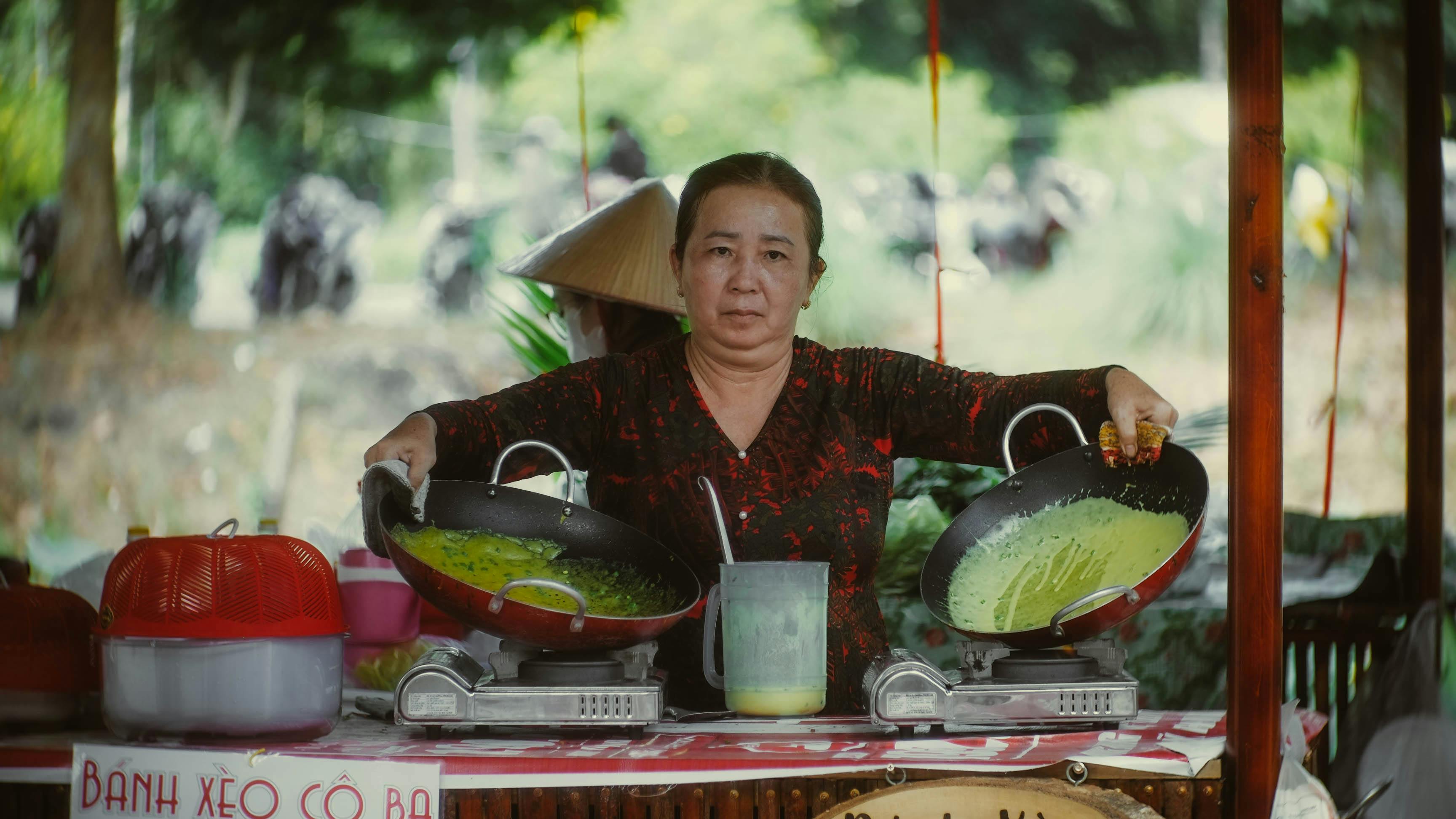Journey Into the Heart of Vietnamese Street Food: A Tale of Tradition and Innovation
Vietnamese street food is a harmonious blend of taste, vision, and aroma. It is a culinary journey that tells tales of tradition and innovation, where each bite offers a unique experience. This article will take you on a gastronomic adventure, exploring the roots of Vietnamese street food and how modern interpretations have breathed new life into these classic dishes.

A Taste of History
Vietnamese street food is deeply rooted in history. From the bustling streets of Hanoi to the vibrant lanes of Ho Chi Minh City, these dishes reflect a rich tapestry of cultural influences. For instance, the famous pho is a result of French colonial influence, while banh mi sandwiches exhibit a fusion of French and Asian flavors. The secret to the distinctive taste of Vietnamese food lies in the balance of five elements - sweet, sour, bitter, spicy, and salty, which represent earth, metal, wood, fire, and water.
The Art of Street Food
The preparation of Vietnamese street food is an art itself. The vendors, who have inherited recipes and techniques from generations, are the artists. They meticulously arrange ingredients, harmonizing colors, textures, and flavors. The most popular street foods include pho (noodle soup), banh mi (baguette sandwich), and bun cha (grilled pork with rice vermicelli). Each dish is a symphony of fresh herbs, vegetables, and meats, served with a variety of sauces.
Modern Twists on Classic Dishes
The Vietnamese street food scene is not static. It evolves with time, embracing innovation while respecting tradition. Chefs worldwide are reimagining Vietnamese street food, adding their twists to the classics. Pho is being transformed into tacos, banh mi into sliders, and bun cha into salads. These reinterpretations are expanding the reach of Vietnamese cuisine, introducing it to new audiences.
The Impact on Health and Nutrition
Not only is Vietnamese street food delicious, but it’s also nutritious. Fresh herbs, lean meats, and minimal use of oil make these dishes a healthy choice. Pho, for example, is a low-calorie soup rich in protein and vitamins. The use of herbs like mint, basil, and lemongrass infuse the dishes with essential nutrients. However, like any cuisine, moderation is key, especially when it comes to dishes with high sodium or sugar content.
The Future of Vietnamese Street Food
The future of Vietnamese street food is bright. With the rise of food tourism and global interest in Vietnamese cuisine, these street foods continue to gain popularity. Culinary innovators are pushing boundaries, creating new interpretations of traditional dishes.
Quick Bites:
- Vietnamese street food is an amalgamation of various cultural influences.
- The preparation of these dishes is an inherited art.
- Chefs worldwide are reimagining Vietnamese street food, giving classics a modern twist.
- These dishes are not only tasty but also nutritious, thanks to the use of fresh herbs and lean meats.
In conclusion, Vietnamese street food is more than just a quick bite on the go. It’s a culinary journey that tells tales of tradition, innovation, and cultural fusion. Whether you’re a food enthusiast or a culinary novice, these dishes offer a unique gastronomic experience that transcends borders and connects people through the universal language of food. So, the next time you see a Vietnamese street food vendor, stop by and take a bite. You might just find a new favorite!




